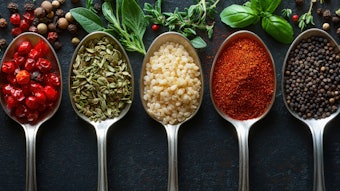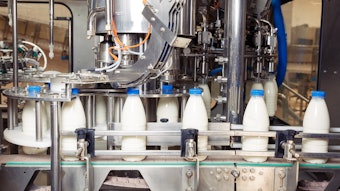
Name: Sudarshan Nadathur, Ph.D.
Title: Chief Flavorist, ADM
Current Location: Erlanger, Kentucky, USA
What led you to the flavor industry?
When I was getting my undergrad in chemistry, a professor said that food science was a rewarding career path. I felt that applying the knowledge I was learning to a useful, tangible and impactful area of science that ultimately provides people with something everyone enjoys – food – was a worthy way to spend my time. So, when I finished my Ph.D. in food science at Oregon State I started working in a research role with a focus on dairy, using fermentation and enzymes and transitioned to an opportunity to become a flavorist. Twenty years and 5,000 flavors later, that’s what I’m doing today.
What applications do you primarily formulate for? Has this changed since you first began your career?
My work has been almost entirely dairy-related: milks, butters, creams, seasonings, dips, dressings, though I have supported many other categories including meat, vanilla, chocolates, etc. Dairy is cross-category, and understanding each of these applications and how to make them better has been a lifelong passion.
Has dairy changed in 20 years? Absolutely! We’ve been transitioning more and more from traditional cow/sheep/goat milk to soy- or pea-based products for a while now. More recently, we’ve even been looking at making dairy proteins through fermentation or using mycoproteins for formulations. With these newer processes come challenges. What works for traditional dairy has to be adapted to what will work for a soy- or pea-based yogurt or milk. Each of these alternative proteins may have off-notes, so masking the flavor of certain plant proteins or covering up the fungal notes is important.
My goal has always been to wear two hats–to come up with new innovations that enable truer dairy taste while at the same time working with customers to think ahead on where dairy can go, expanding its capabilities.
What are some of the current trends that are exciting you at the moment?
At ADM, we’re dedicated to finding solutions to feeding a growing global population and making those proteins taste great. To enable that, we are considering which ingredients we can ideate on and which entirely new ones we can innovate. Addressing flavor deficiencies and functional issues in non-traditional dairy are some other challenges of the moment, like achieving the beautiful mozzarella cheese stretch you get when you pull a slice of pizza from the pie. The industry overall hasn’t yet mastered that in non-traditional cheese and solutions are coming from start-ups via fermentation-derived casein. Overcoming these hurdles is top-of-mind, as is lowering our carbon footprint while we do so.
Another trend, and demand from consumers, is making products with reduced sugar, salt and fat taste like their full counterparts. This can be difficult – once we reduce a commodity, the formulation becomes thinner. For instance, reducing sugar can make an application more watery. We have to be creative in how to fill in these gaps. If we replace sugar with a different sweetener, that may affect the way strawberry or chocolate milk is perceived. Ingredient selection is a key consideration.
Are there any formulations you would consider timeless? Why?
Dairy makes ice creams, milks and coffees more indulgent. And adding some of the supportive notes of dairy into fruit flavors will continue to be in demand. Dairy is not always the star, but it is often a supportive ingredient across a number of categories and in many classic concoctions we know and love.
I would also say cheddar cheese. Duplicating the taste of traditional cheddar as a flavor system in vegan products is still ongoing – it’s a complex flavor! Even though we can analyze the components of cheddar cheese to understand the composition, combining these molecules into a flavor system may not deliver the traditional taste consumers are expecting. The taste components of cheese are an integral part of the profile and hard to replicate. We’re continuously looking to improve what we have and seeking new molecules to make that flavor taste as close to the gold standard product as possible.
Advice for people coming into the flavor field.
Learn to combine the science and the art of creating new flavors. (Though, I must admit, I’m more partial to the science.) Each customer requires their own signature taste. Fulfilling their needs demands not just utilizing the right ingredients, but also understanding the regulations, cost, manufacturing guidelines and other factors. All need to be navigated skillfully for your next (or first) great formulation to be realized. Every day is a different challenge as we continue to move into a regulatory environment where non-GMO, organic, precision fermentation-derived and other protein ingredients come into play. However, when you do get it right, it’s enormously rewarding to see your flavor become a consumer favorite.
One specific piece of advice I’ll offer: You have to be a foodie to really be successful in this field. The more you enjoy food and the more cultures you mingle with, that’s going to expand your mind. A breadth of knowledge of flavors from around the globe will make you more creative, as you can find solutions from different cuisines you’ve experienced to create a winning product for the customer.










